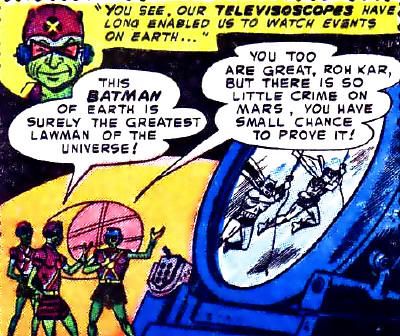
When the JLA series launched in 1996, it was cause for much celebration. The team had spent a dozen years avoiding their most iconic members in order to emulate the successful Marvel Comics super-group formula of mixing a few headliners with a lot of second stringers the book's writers could have their way with. It never worked as well for DC though, because no matter how hard they tried, as a company and creative collective their favoritism toward their icons could never truly be contained. JLA began the renaissance of valuing DC's most recognizable brands, which has led to common folk being able to thumb through shirts featuring guys like Green Lantern and the Flash at their local department store. JLA restored the Magnificent Seven finest heroes of the universe: Superman, Batman, Wonder Woman, GL, Flash, Aquaman and... the Martian Manhunter?
Although J'Onn J'Onzz had been one of the most consistent figures in the Justice League since 1984, new readers brought in by the spectacle of JLA were intrigued by this comparatively enigmatic character. Few of his solo stories had ever been reprinted, none of his supporting cast or foes could be found in reference books like Who's Who, and fellows familiar with his early tales were few and far between, at least online. With the spotlight shone through his sudden close association with greatness came the revelation of a glaring oversight in DC history-- that not only was there some dispute as to who had crafted the Manhunter from Mars' solo stories, but even the identity of his very creators!
I've read internet sources who've claimed John Jones' origin story was by Jack Miller, and that credit Dave Wood with a good many of the character's scripts. Some have speculated Miller wrote the debut script from Samachson's plot, while fan historian Jerry Bails thought Miller was merely a pen name of Samachson. In 1988, editor Mark Waid said that no one knew who wrote the series, only that artist Joe Certa drew every strip. In 1995, author Les Daniels attributed the first Manhunter from Mars tale to Mort Weisinger. Finally, DC Comics announced (with absolutely no fanfare and only if the matter came up) that Joe Samachson and Certa were the responsible parties. They could then join the likes of Jerry Siegel, Joe Shuster, Bob Kane, Charles Moulton, John Broome, Carmine Infantino, Gil Kane, Mort Weisinger, and Paul Norris as the creators behind the founders of the JLA.
Of course, if you know your comics history, you may detect the common fib. Bob Kane had it in his contract that he would receive sole credit for all Batman stories, regardless of who actually produced them, and the lion's share of the Batman mythos was actually created by Bill Finger and Jerry Robinson. Likewise, there was no "Charles Moulton," a pseudonym combining the middle names of Wonder Woman's creators, Dr. William Moulton Marston and Harry Charles Peter. Both the Flash and Green Lantern were derivatives of heroic names/concepts from a previous generation of artists. We may have had the gents officially tied to the Martian Manhunter, but who truly came up with the Alien Atlas?
That story begins in 1953, with a script from Batman called "The Manhunter from Mars!" by pulp science fiction writer Edmond Hamilton. Although it featured a goofy protagonist named Roh Kar in pursuit of a fugitive while aided by the Dynamic Duo in a forgettable short story, that title certainly was evocative. Superman editor Mortimer Weisinger likely took note of it.
Weisinger was a deeply unpleasant man who in earlier years had created the Sub-Mariner knock-off Aquaman, the Batman clone Green Arrow, and the Flash riff Johnny Quick. Weisinger always kept his eye on competitors' product, even those of fellow National editor Jack Schiff, with whom he had a long history on comparatively good terms and who had ended up as caretaker of Weisinger's old characters. While the Superman line had ridden out the super-hero bust of the late '40s, Batman hadn't fared as well, so Weisinger pressured Schiff to adopt his "innovations." This led to the proliferation of alien menaces in the Bat books, as well as mischievous other-dimensional imps, a ridiculously extended family, and themed pets. Weisinger had likely seen the potential in a "Manhunter from Mars," and wouldn't hesitate to exploit it.
Weisinger had a habit of passing one writer's story ideas to another to script, muddying up specific credits and insuring his ultimate control of the end product. As he is said to have developed the second life of the "Manhunter from Mars" property with Joe Samachson, a little deductive reasoning could be applied to parse out who was responsible for what. In real life, Samachson was a scientist, just as J'onn J'onzz revealed himself to be in his first story. In 1955's "The Strange Experiment of Dr. Erdel," J'onzz waxes nostalgic for his lost world of Mars, an idyllic place free from war and crime. The entire tale is devoted to setting up how the alien arrived on Earth, and what his motivations would be to help us route our own wrongdoers. It seems fairly clear this was Samachson's hand at play, as neither Weisinger nor Jack Miller were known for that sort of quiet meditation. Weisinger's contribution seems mostly to be in the plethora of powers assigned to the alien, even though this undermined Samachson's premise of his fighting ordinary Earthly crooks in fairly realistic situations. This is further evidenced in the follow-up tale "The Case of the Magic Baseball," which reads more like a continuation of the first story than something intended to be published a month later, with most of the action revolving around manipulating baseballs through mild telekinesis.
Samachson is credited with writing a third and final story, "The Man With 20 Lives," in which Detective John Jones uses his powers to appear as the ghost of a murderer's victim in order to force a confession. All three of these tales show the influence of EC Comics' popular line of sophisticated science fiction, crime, and horror comics. This may have been another indication of Weisinger "keeping up with the Jones," or a reflection of Samachson's roots as a pulp writer. It's also possible this was the influence of Detective Comics editor Schiff, who'd overseen a series of watered-down, all-ages rip offs of EC titles for DC (most famously with House of Mystery.)
By this point Frederick Wertham's scathing criticism of comic book violence Seduction of the Innocent had seen print, and a sea change was already apparent in the fourth John Jones script. Suddenly, Samachson was out, and Dave Wood's "Escape To The Stars" involved John Jones' clash with a high tech bank robber, far removed from the earthier material which preceded it. Jack Miller's first of a great many scripts was "The Phantom Bodyguard", which only referenced a fraudulent murder attempt, where Samachson had depicted the dirty deed. After that throwback, Miller's scripts leaned more toward the Wood model, of fantastic circumstances and low peril, involving lost powers, evil robots, canine companions and con acts. The only death in these early follow-up scripts were accidental and off-panel.
So, how did the John Jones, Manhunter from Mars strip come to be printed in Detective Comics for a decade? Was it submitted by Samachson, or proposed by Weisinger, and how much was the earlier Hamilton script involved? Did Weisinger intend the strip to appear in one of his books, was it rejected, or was it always meant for Detective Comics? Was Samachson dropped from the strip, did he abandon it, and how were Weisinger or Schiff involved in the decision? At what point was artist Joe Certa brought into the picture, and was he influenced by the Batman story, which featured some Martians with more than passing similarities to J'onn J'onzz?
My belief is the credits released by DC Comics are entirely credible. The stories attributed to Samachson, especially his first, barely resemble anything Jack Miller would later produce. By extension, a good deal of what Samachson sets up in his early installments is ignored by the writers who followed him, leaving only the basic premise and some of the initial powers intact. As with Julie Schwartz's heavy but uncredited influence over his Silver Age revivals, DC policy to discount their editors as part of the creative unit seems to come into play here. In the case of John Jones, the Manhunter from Mars, it seems that only Weisinger's name deserves to be recognized alongside Joe Samachson's contributions and Joe Certa's visual representation. That group should also be credited for Lt. Saunders, Jones' original commanding officer.
It's worth noting though that some later creations remain up for grabs. It seems Dave Wood mistakenly renamed Saunders "Captain Harding," and Jack Miller continued using the name. Since the visual of Saunders slowly transformed from a stocky, balding, cigar chomping hardcase at crime scenes to the friendly, tubby, hirsute desk jockey Captain Harding, it's arguable that they ended up two separate characters. Lady policewoman Diane Meade might have been a notion of the socially progressive Schiff, or perhaps Weisinger suggested the strip needed its own Lois Lane? The same could be true of Zook, as he fits both Weisinger's imp mold and Schiff's tendencies to view his books as geared toward younger kids. The sudden push of Batman foe Professor Arnold Hugo in a reoccurring role, the Caped Crusader's cameo appearance in his first story, and Jones' town finally being named all point toward words from Weisinger. The Diabolu Idol-Head is a mystery, but Mr. V and Vulture were awfully reminiscent of other work by Jack Miller.
This is all speculation on my part though, as not a single one of the men responsible for all those John Jones tales is with us today to help sort it all out. I just felt like offering my theories on the matter, because we'll likely never know the full story behind the creation of the Martian Manhunter's lore.




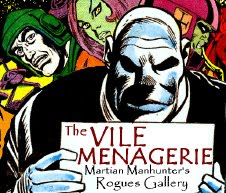


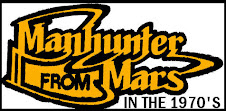
















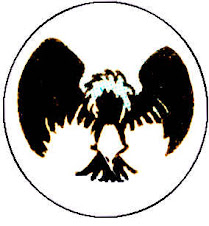




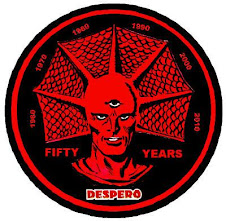
6 comments:
"That story begins in 1953, with a script from Batman called "The Manhunter from Mars!" by pulp science fiction writer Edmond Hamilton."
It makes me very happy, for whatever reason, to learn that one of the creative forces behind J'onn J'onzz was a bona fide pulp writer. I've heard some people fault J'onn for not having a Golden Age pedigree. Well, if his roots are in the sci-fi pulps, then he's (in my mind) a completely different type of character, and trying to shoehorn him into the traditional superhero mould is like putting a square peg in a round hole. I would find it really interesting if some writer came along and steered him back towards the sci-fi spectrum and away from the superhero genre. It might just produce interesting results. Certain characters just don't work outside of the sci-fi realm, like Adam Strange, for example.
It's a shame there's no official history of the character and that everyone involved has long since passed on. Hearing the words of at least one of his creators would help define the character in ways we fans cannot.
Great essay. THIS should be the Foreword to Martian Manhunter Archives Vol. 1. I didn't know Weisinger edited Detective Comics. All online sources I've seen credit Schiff as editor of both Bat-books.
My own groundless speculation is that the first "The Strange Experiment of Dr. Erdel" was originally intended for one of Schiff's fantasy/sci-fi books, House of Mystery or House of Secrets, but then Schiff (or Weisinger) decided John Jones, the Manhunter from Mars would make a good Detective Comics back-up.
One correction: "Charles Moulton" was the combined pseudonym of William MOULTON Marston and Henry CHARLES Peter.
Tom, Weisinger didn't edit Detective Comics, he just pushed Jack Schiff around when it came to "suggestions" about the direction of a faltering book. Weisinger always thought he knew best, had the sales to "prove" it, and was tight with DC's big wigs. Schiff was a lefty distrusted by the suits who, despite helming the Batman line with Whitney Elseworth in its heyday, has been maligned for decades over the misguided '50s revisions.
Thanks for the save on "Charles Moulton." I'll have to edit that. Marston has been credited solely as "Marston" for so long, that fact escaped me.
You know, I can easily gloss over bigger text pieces, especially of info I'm more or less aware of, but this was well written and engaging. Props!
Terrific write-up, Frank. Pretty comprehensive and insightful.
I wish they would have pursued the original Samachson direction with the mysteries and procedurals and the toned-down powers. I think, ironically, fifty years later, his "adventures", his supporting characters, and his villains might have fared better had his direction been more distinct. On the other hand, I've always liked the Vulture plot.
Frank, thanks for an interesting read. It is perhaps ironic that the Martian Manhunter's origins are shrouded in mystery.
I think that J'Onn should have a few adventures that are pulp based and we have seen pulp based heroes do well outside of comics. (Perhaps having J'Onn do an Indiana Jones sort of adventure might work -- you could have him take a cover identity and find something truly strange.)
Post a Comment